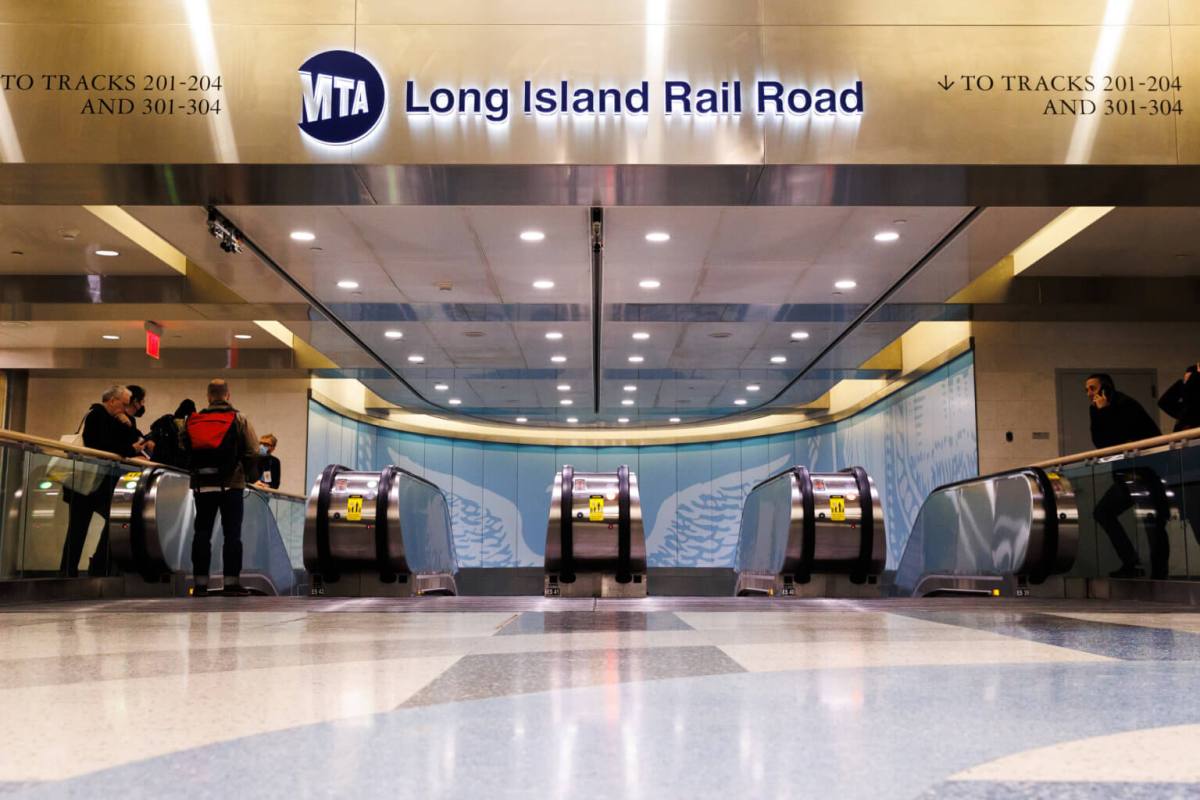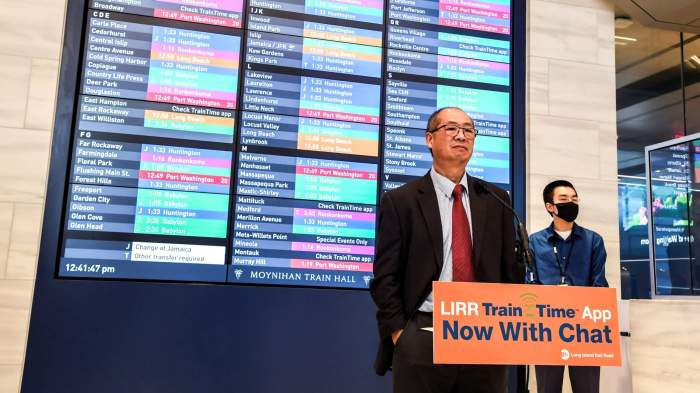Full Long Island Rail Road service into Grand Central Terminal is finally set to begin on Monday, significantly increasing service capacity on the railroad and bringing a new, augmented schedule for riders.
Grand Central Madison, the brand-new 714,000-square-foot terminal situated deep underneath Manhattan’s east side, will host 296 LIRR trains per day starting Feb. 27, out of a new total of 936 LIRR trains going in-and-out of Grand Central and Penn Station.
The full opening of the new terminal — which for the past month has been open only to a shuttle train between Grand Central and Jamaica — means not only an increase in train service between Long Island and Manhattan, but a brand new schedule for the LIRR’s ten branches and city sections.
LIRR riders heading to the east side are expected to have commutes about 30-40 minutes shorter than before with the new terminal, Metropolitan Transportation Authority officials and Governor Kathy Hochul have said.
The governor said the overall project — the first expansion of the LIRR in 112 years — was one of “genius” logic, creating a more integrated transit network bringing people right where they’re going or throughout the metropolitan area.
“When you’re on a train, every minute matters,” the governor said at the opening ceremony on Sunday, noting in particular those who wake up early in the morning to get to midtown service jobs. “Just to give the precious gift of 40 more minutes to the woman who cleans the rooms of the hotels or people who work the elevators, make the food for us, that is what I’m so happy about.”
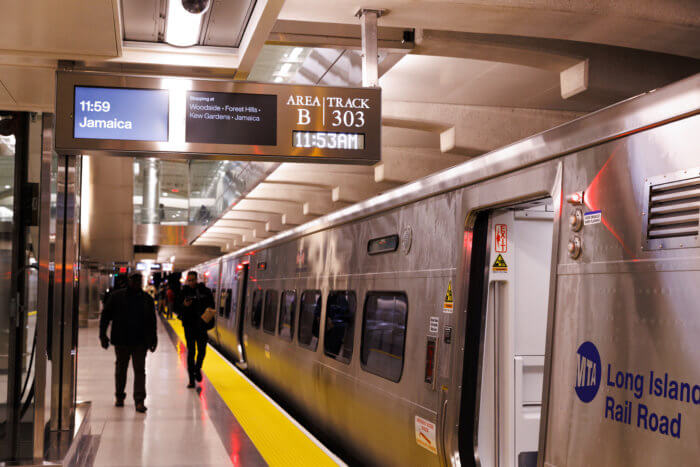
“Giving people that sense of confidence, giving them time back, their job is waiting for them, and there’s no stopping us now,” Hochul continued. “We are on the verge of accelerating the New York comeback story with this project alone.”
The opening has been a very long time coming: the “East Side Access” project was first envisioned in the 1960s and started in earnest in the 1990s, and in the intervening 25 years became a boondoggle of epic proportions. Its over-$11 billion price tag makes it one of the most expensive infrastructure projects in American history.
Senator Chuck Schumer, who touted billions of federal dollars he secured for the project, painted the decades of delay as the consequence of a rolling series of external circumstances: soon after the project launched in the 1990s, the city had to deal with 9/11, putting the project’s completion on the back-burner. Then came the financial crisis, Hurricane Sandy, Donald Trump, and finally COVID-19, all of which saw money and priorities diverted from East Side Access, one way or another.
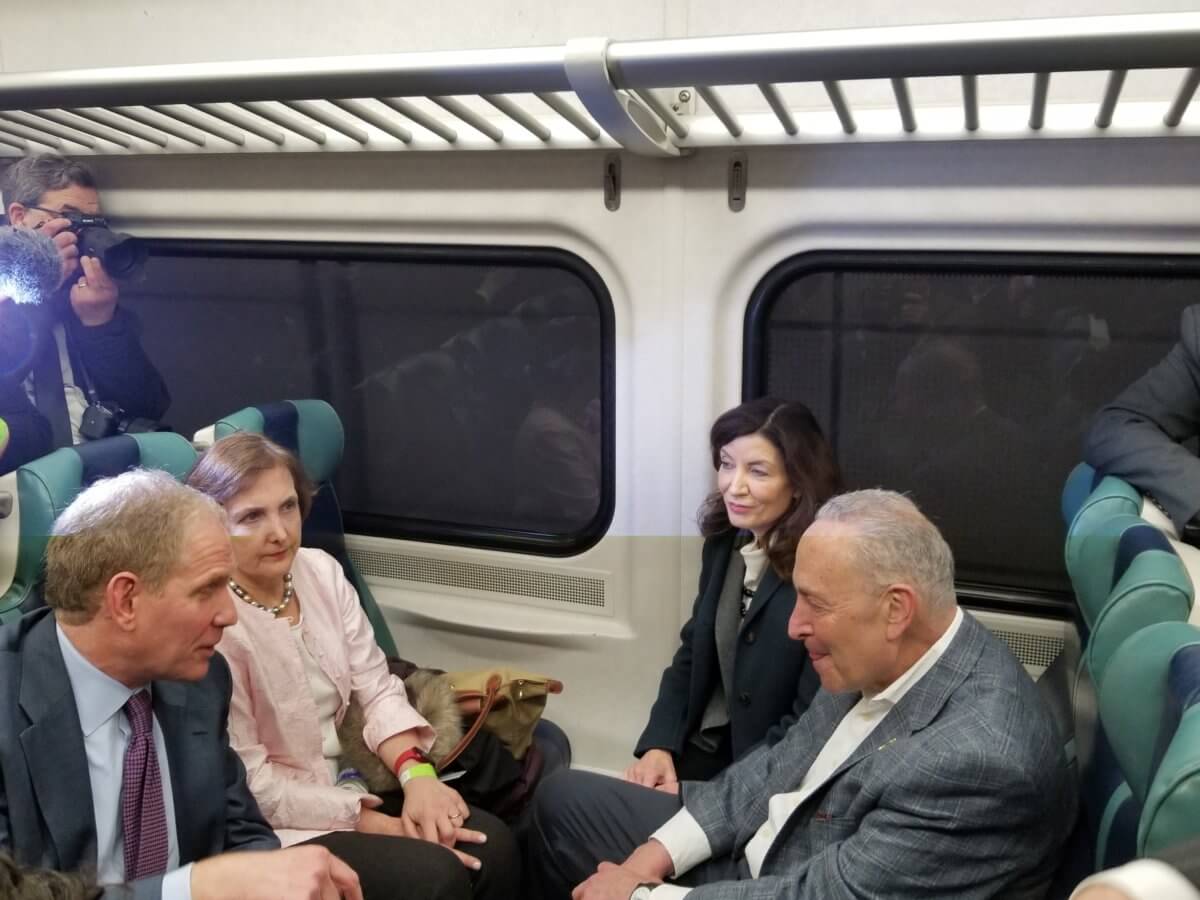
The construction even claimed the life of a sandhog digging the tunnels named Michael O’Brien, who was accidentally crushed to death by a falling slab of concrete. A plaque honoring his life will be installed in the concourse.
But the Senate Majority Leader said the era of New York being embarrassed by its sclerotic mass transit is over: with East Side Access completed and a similar project, Penn Access, in the works to bring Metro-North to the west side, New York is finally expanding its mass transit system again.
“After years where people said our transit system is finished, close to finished, we are rolling up our sleeves and expanding this transit system, this lifeblood of New York, everywhere,” said Schumer. “From East Side Access, to Gateway, to Metro-North, all of it, making the lives of New Yorkers easier and tens of thousands of new, good-paying union jobs throughout the New York metropolitan area.”
The MTA claims it has learned lessons from East Side Access for efficient project management that are being implemented going forward, especially in terms of centralizing decision-making and consolidating work into a smaller number of contracts. Going forward, the MTA intends to use “design-build” to minimize overlapping contracts, and since last year Metro-North and the LIRR have been overseen by one executive, Cathy Rinaldi, instead of the historical two.
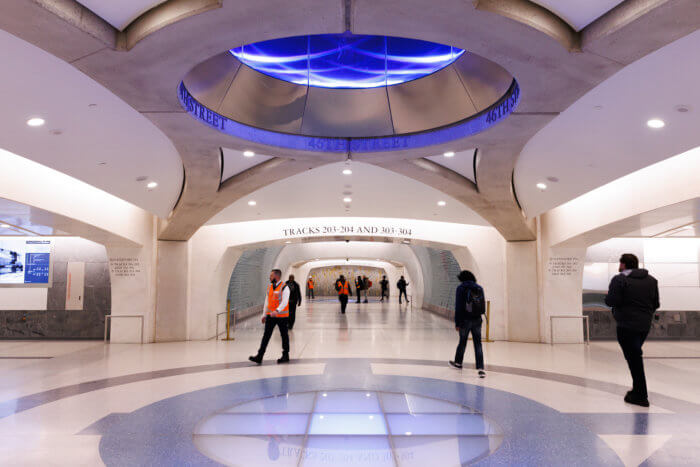
Despite the significant increase in service capacity, the new LIRR timetables have not been met with universal adulation. State Assembly Member Charles Lavine penned a letter to the MTA last week arguing that riders of the Oyster Bay branch will actually face longer commutes under the new timetables; MTA Chair and CEO Janno Lieber said at the MTA’s monthly board meeting last week that the Oyster Bay branch will see 10% more service overall and riders will be able to connect to 50% more trains at Mineola going forward.
“We completely respect that people like one-seat rides,” said Lieber. “But they have opportunities to connect to just a ton more trains.”
Also expressing some concern are riders in Brooklyn, with most trains on the Brooklyn branch now terminating at Jamaica instead of going straight through to Long Island. Speaking with amNewYork Metro at Jamaica Terminal following a ride from Grand Central with Hochul and Schumer, Lieber said Brooklyn commuters will benefit from a larger number of trains overall on the line, plus more trains filing into Jamaica for commuters to-and-from Long Island.
“You’re getting more trains, and you have so much more service, so many more options thanks to the incredible volume of trains that’ll be passing through Jamaica,” he said. “New Yorkers know how to switch trains, they just need some time to get accommodated to the new arrangement. I’m very optimistic.”
LIRR riders can learn more about changes to their train schedules at https://new.mta.info/agency/long-island-rail-road/lirr-to-grand-central/branch-service



